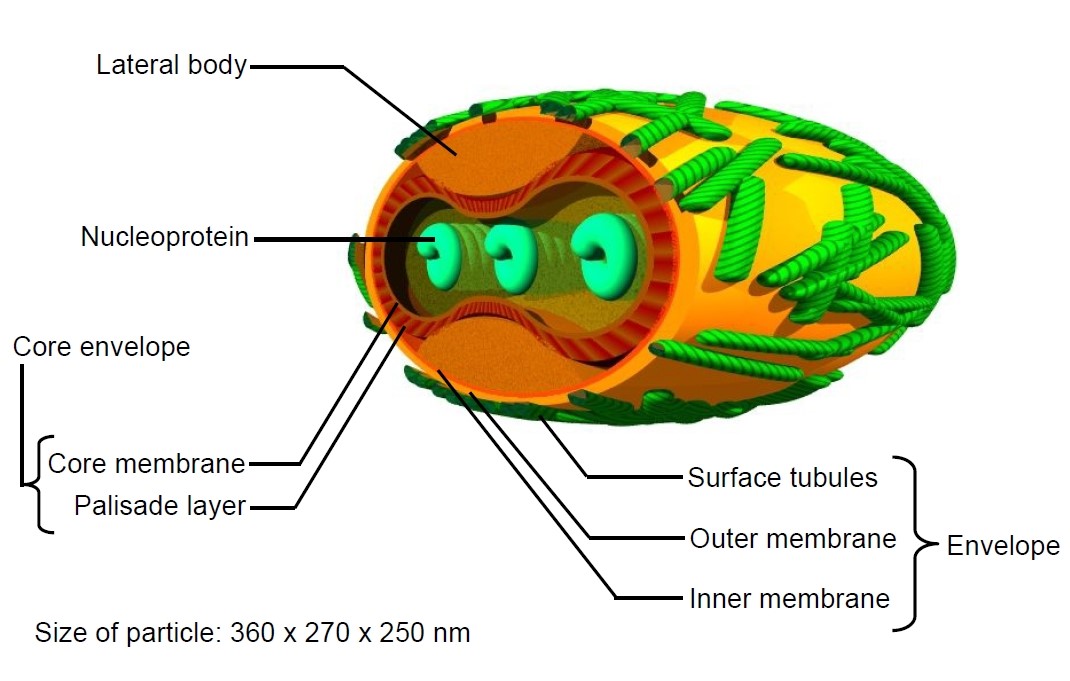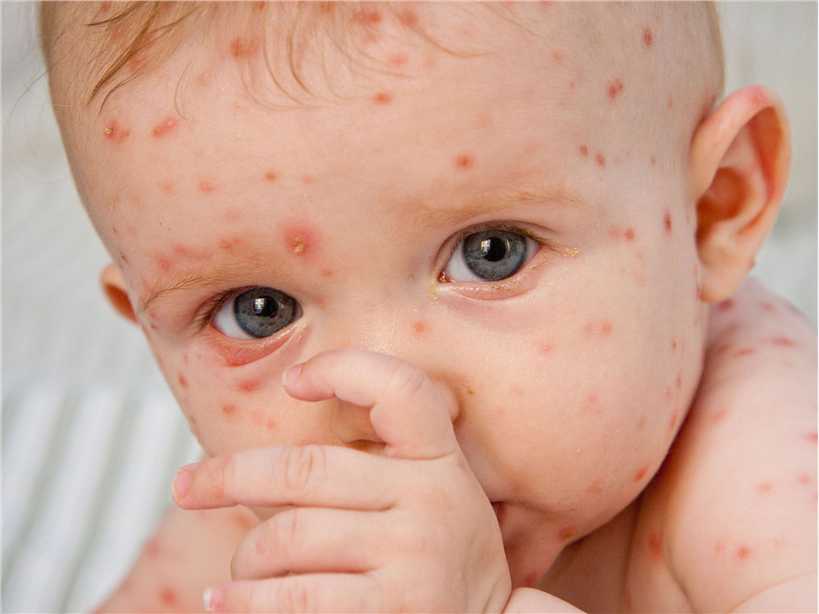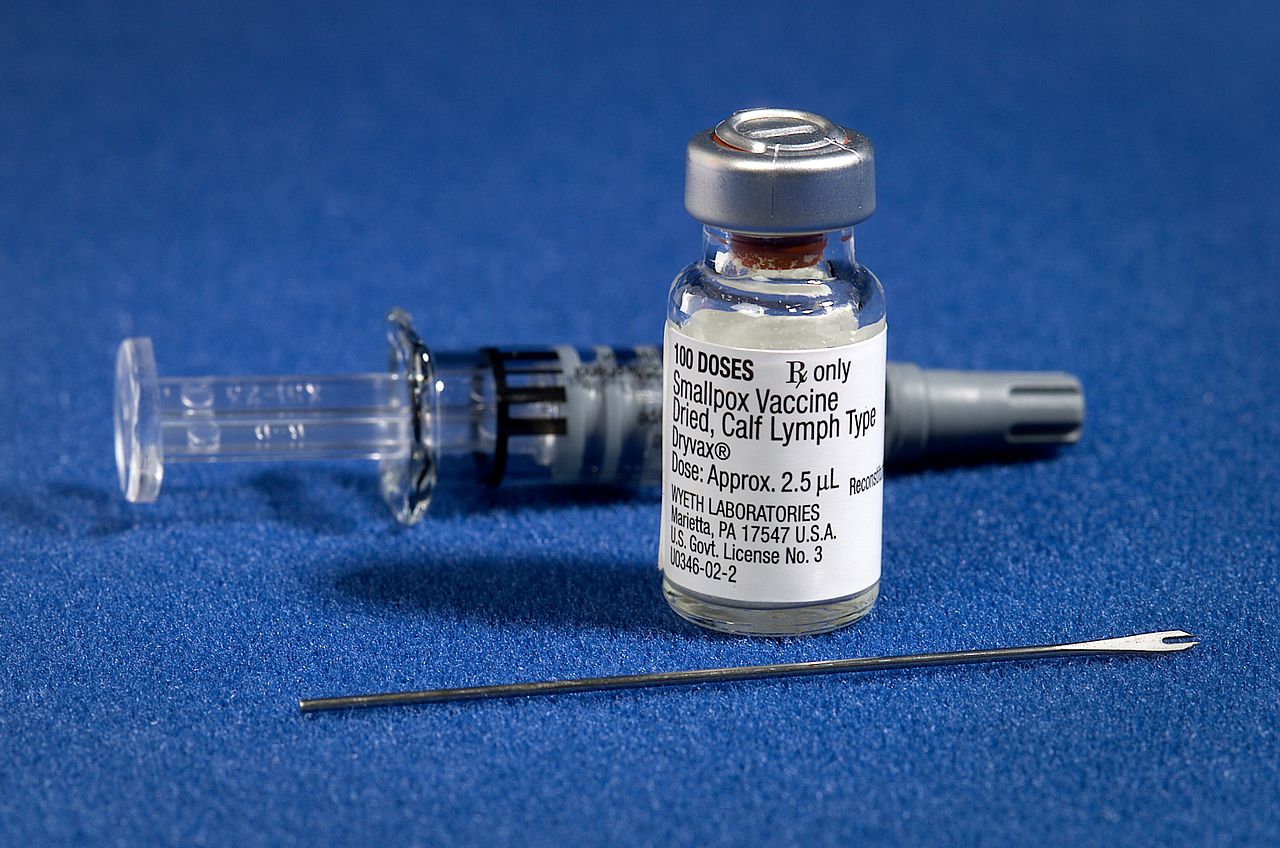VARV belongs to the family Poxviridae, subfamily Chordopoxvirinae, genus Orthopoxvirus. It is the causative agent of smallpox, a disease being highly lethal and highly contagious. In general, smallpox disease is classified into four groups, ordinary, modified, malignant, and hemorrhagic. The malignant and hemorrhagic forms are usually fatal. This viral pathogen is specific to humans. In the 18th century, the virus was widely transmitted among human population, causing the death of more than four hundred thousand people in Europe each year. During World War Two, VARV was used as a biological weapon. At present, this virus is completely eliminated from the human community through a global campaign of vaccinations and surveillance.
VARV is the most complex Orthopoxvirus genus, which has many different strains. It is a large brick-shaped virus measuring approximately 300×250×200 nm on electron micrographs. The genome of VARV consists of a single linear double-stranded DNA molecule with approximately 18.6 kb in length. The genome binds to nucleoproteins in a dumbbell-shaped core. The core is surrounded by a core membrane made of lipids and proteins that protect the DNA and other proteins required for the virus to replicate. Outside the core membrane is a palisade layer that protects the core. Outside the palisade layer there are two lateral bodies which contain important enzymes for the virus to replicate. The virus also has an envelope, an outer membrane which is made of three layers itself. First, there is an inner membrane, then an outer membrane and finally surface tubules, which help the virus attach to host cells.
 Fig.1 Cut-away structure of Variola virus.
Fig.1 Cut-away structure of Variola virus.
VARV usually enters the body through inhalation of airborne droplets containing the virus from infected patients. Transmission also occurs through face-to-face contact, direct contact with contaminated objects. The virus can invade the respiratory tract through the mouth and nose, attach to respiratory endothelial cells and the cells in the immune system as well as cells located in blood vessels. It also infects skin cells. The surface tubules are required for the virus attachment to the host’s cells, which bind to proteins on the outside of the target cells. When the virus attaches, the outer membrane fuses with the host cell membrane, releasing the core into the cytoplasm of the host cell. In the cytoplasm, lateral bodies release the enzymes required for the virus to start replication.
The virus is stable in dried conditions. Under room temperature, it can survive in crusts for more than a year and for ~3 months in the dark. It can be killed by heating at 60°C for 10 minutes when moist, but can withstand 100°C for 5-10 minutes when dry. It is sensitive to UV light. Treatment with sodium hypochlorite or formaldehyde at a concentration of 0.2% for 24 hours can inactivate the virus at room temperature. The virus is resistant to 1% phenol for weeks at 4°C but inactivated within 24 hours at 37°C.

The initial onset of symptoms of smallpox usually appears 7-17 days after infected. The initial symptoms are similar to the signs of influenza and the common cold, including fever of at least 38.3°C, muscle pain, malaise, headache, and prostration. Nausea and vomiting, as well as backache, may also occur due to the virus invasion of the digestive tract. Besides, smallpox virus preferentially attacks skin cells, causing the characteristic pimples associated with the disease. Typically, by 14 days after infection, the characteristic progression of skin lesions is observed: macules, papules, vesicles, pustules, umbilication (classic and characteristic), and crusting.

In the event of an outbreak, people who had smallpox would be kept in isolation in an effort to control the spread of the virus. Anyone who had contact with someone who developed an infection would need the smallpox vaccine, which can prevent or lessen the severity of the disease if given within four days of exposure to the smallpox virus.
Currently, most vaccines have been developed to prevent people from smallpox virus infections. Immunization against VARV with subunit vaccines might improve protective efficacy against smallpox. The subunit vaccine is composed of vaccinia virus envelope proteins, extracellular enveloped virion (EV) protein B5. Besides Orthopoxvirus A13 envelope protein exists a conserved epitope that may be regarded as a target for neutralizing and protective antibodies against smallpox.
There is currently no cure for smallpox. Smallpox has been completely eradicated due to repeated and worldwide vaccination programs. If someone is unlucky to have smallpox, vaccination within one to three days or treatment relieving the initial symptoms of smallpox can keep the disease from being so severe. In addition, antibiotics can also help to reduce bacterial infections in the lungs or on the skin associated with VARV.
Reference: